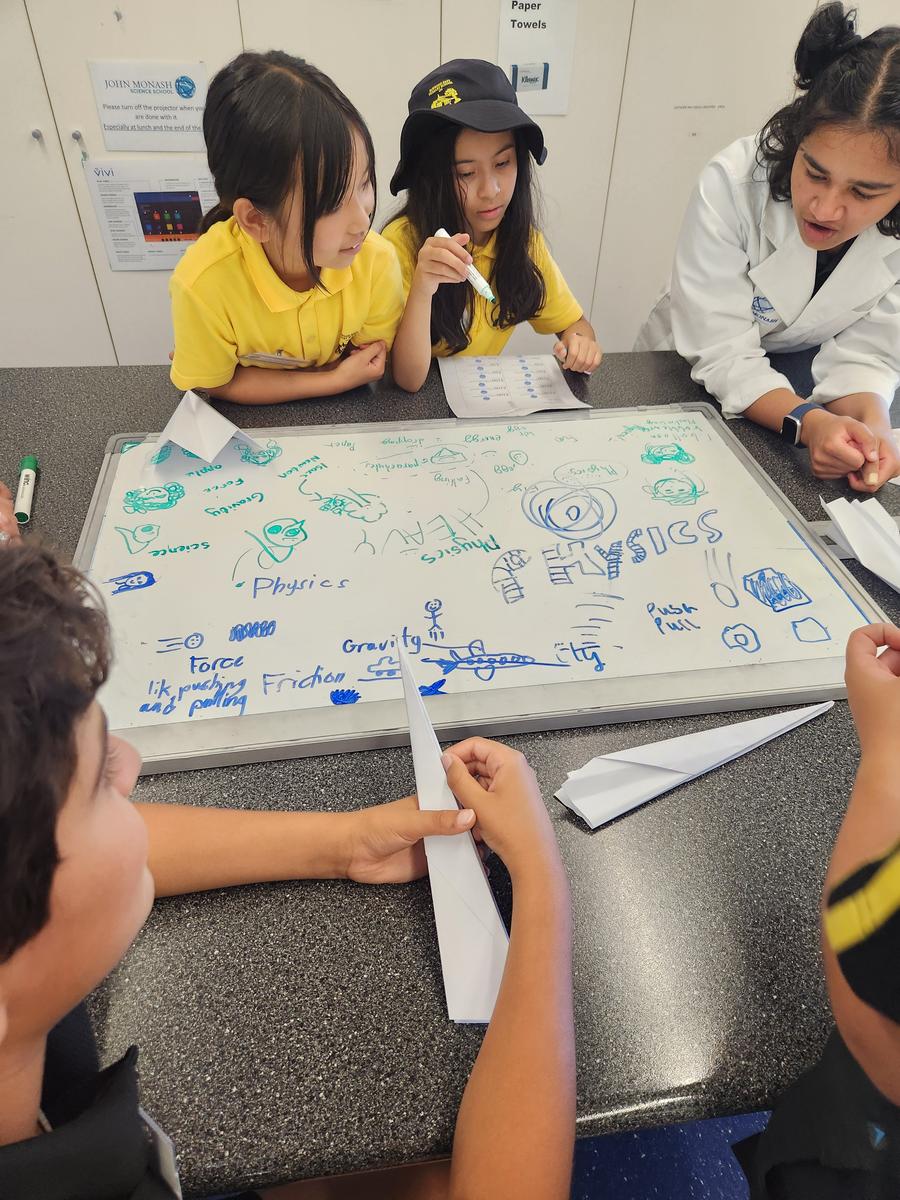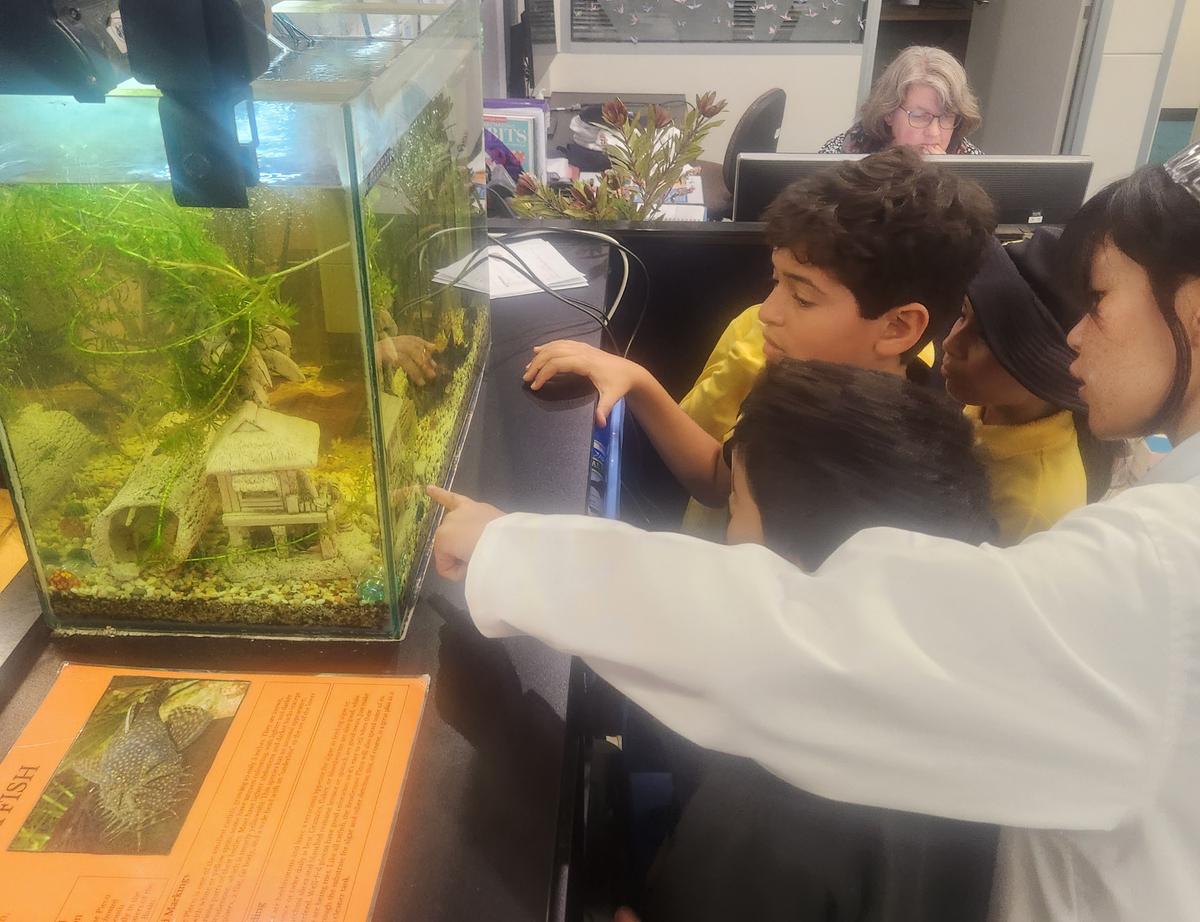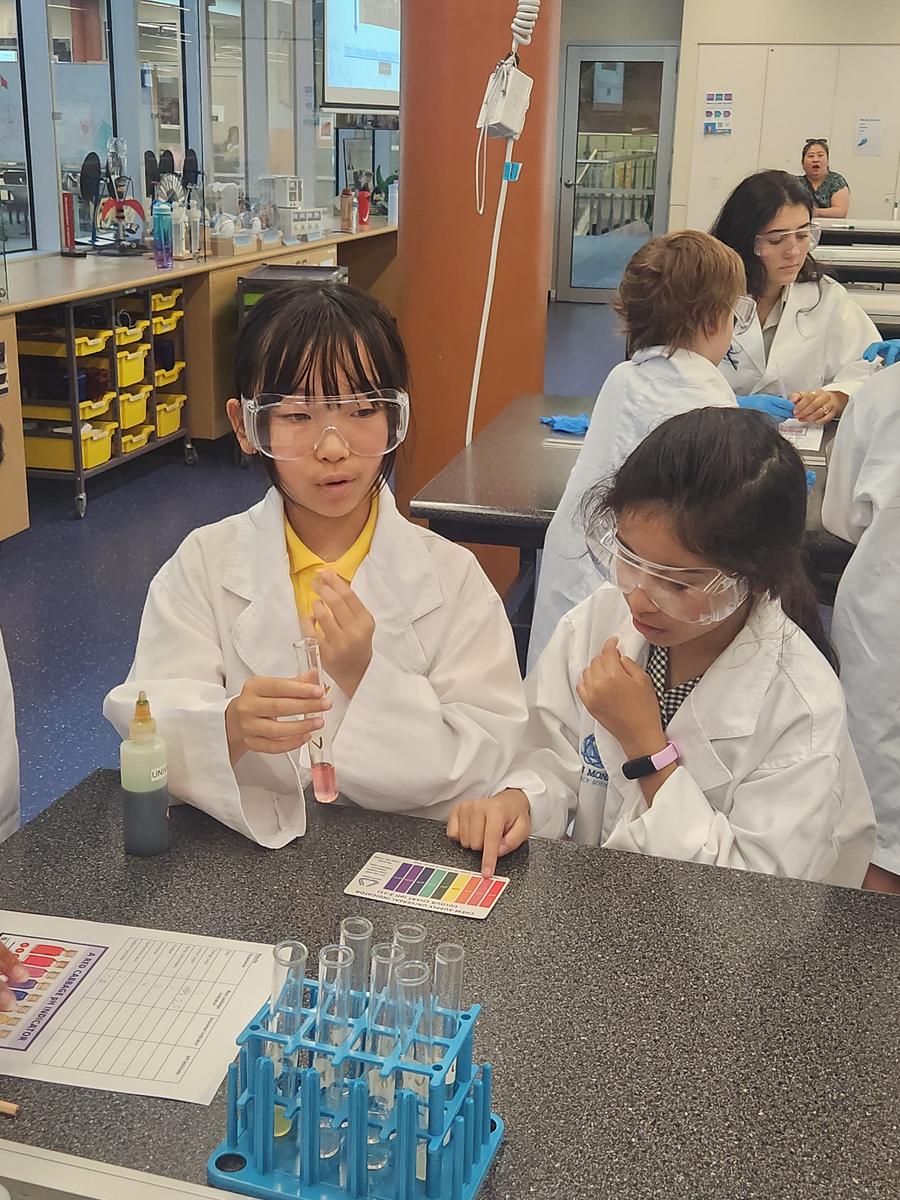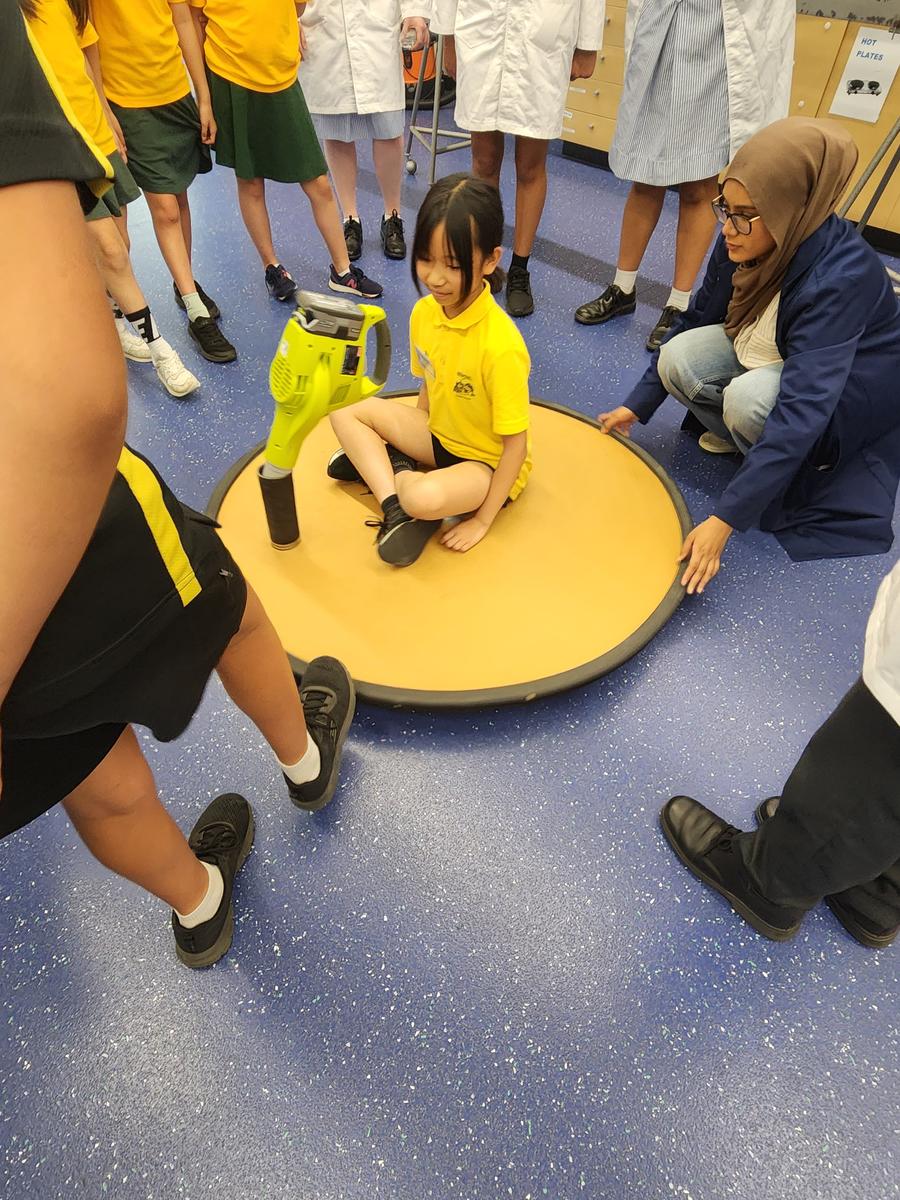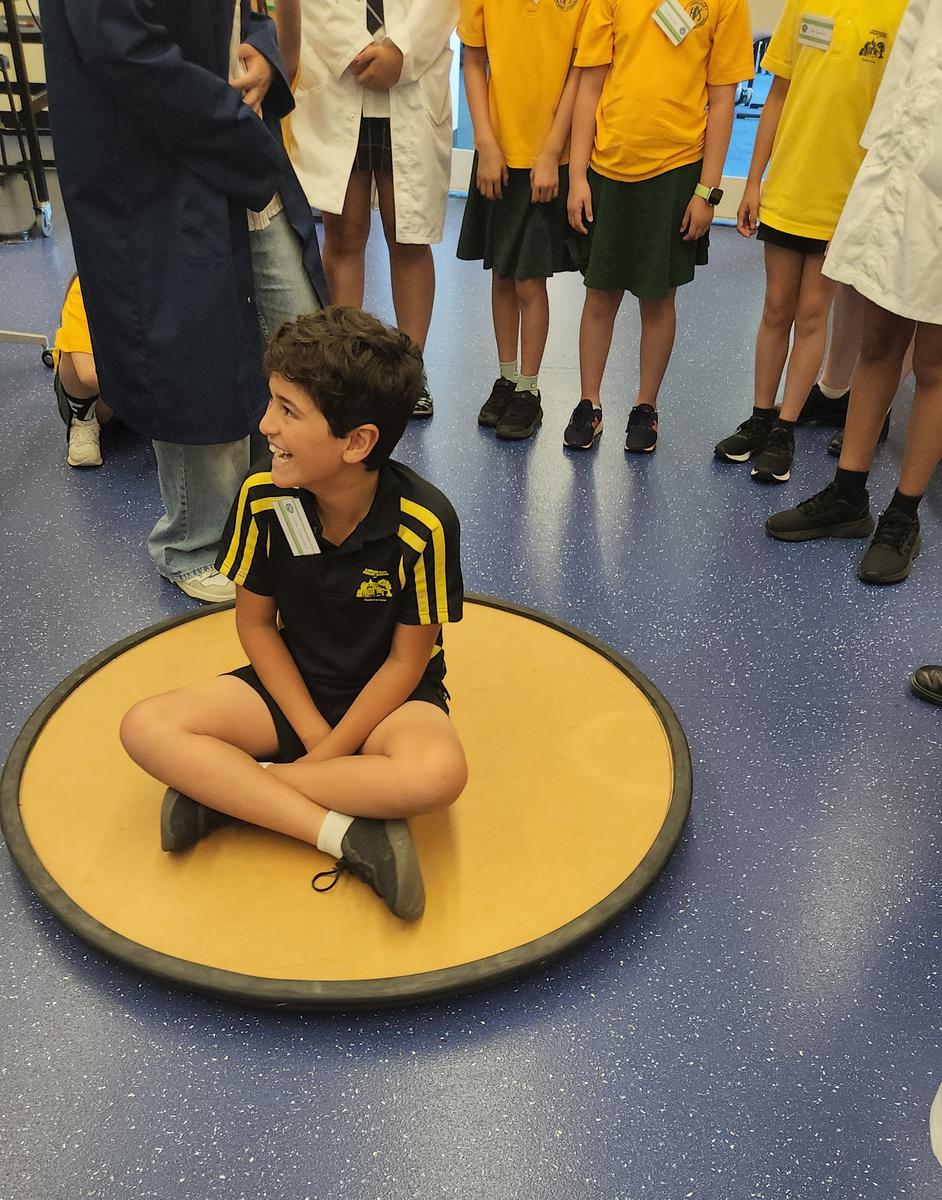Year 5 - Little Scientists

Microscopes, Molecules & Magic
Our Little Scientists Malek, Evelyn, Georgios, and Janelle from Year 5 have been busy exploring the wonders of science at John Monash Science School (JMSS)!
Every Wednesday afternoon, these budding scientists dove into exciting experiments and mind-blowing discoveries, learning from high school students who became their teachers for the day! Each week brought a new scientific adventure—from chemistry to physics, biology to technology. With different teachers and hands-on activities, they got a taste of what it’s like to be real scientists.
Who knows? Maybe one day, they’ll be the ones teaching the next generation of Little Scientists!
Week 1 - Chemistry
Ever wondered how a humble purple cabbage can reveal the secrets of acids and bases?Our Little Scientists jumped into the colourful world of pH indicators!
Imagine holding a piece of purple cabbage that can change colours like a wizard's potion! When cabbage juice meets something acidic, like a lemon or vinegar, it turns a vibrant shade of red—just like a fiery dragon's breath! But when it mixes with something basic, like soap or baking soda, it transforms into a cool, refreshing green, as if touched by an enchanting forest sprite. So, why does this happen?
Well, think of acids and bases as magical opposites. Acids, like those lemons, have a low pH, while bases, like baking soda, boast a high pH. Water, our neutral hero, sits right in the middle with a pH of 7. Isn't that fascinating?
Week 2 - Biology
Have you ever wondered what an onion peel looks like up close? Or what tiny creatures might be hiding in a drop of pond water? The Little Scientists grabbed their microscopes and dove into a world too small to see with just our eyes— and WOW, did they find some surprises!
First, they peeked at onion peels and pond scum... and guess what? There were microscopic bugs swimming around! These tiny creatures are so small that without a microscope, we’d never know they were there.
Next, they explored what different materials look like up close. Hair looked like a twisty rope, wood had tiny tunnels, and skin had crazy patterns—almost like a maze! Who knew everyday things could look so weird and amazing?
And the adventure didn’t stop there! The Little Scientists also studied frogs and fish to see how their bodies help them survive. Webbed feet for swimming, slippery skin for staying safe—nature is full of incredible designs!
Week 3 - Exploring Science
Oobleck - What happens when sound meets slime?
The Little Scientists got messy with oobleck, a super cool non-Newtonian fluid!
It’s a magical mixture that flows like a liquid when you pour it but hardens like a solid when you punch or squeeze it! But wait—it gets even wilder! When we put oobleck on a speaker and turned up the music, it started to dance! The sound waves made it wiggle, jump, and move in crazy patterns. Not only could we hear the sound, but we could see and even feel it through the vibrating oobleck. Science + slime + music = FUN!
Bubble Tea - Why just drink your juice when you can snack on it instead?
The Little Scientists whipped up some bubble tea using a cool technique called spherification—which sounds super fancy but is really just yummy science! By mixing special ingredients, we turned juice into squishy, bouncy bubbles that burst with flavour when you bite them. It's all part of a food science trend called molecular gastronomy, but we just call it delicious fun!
Bubbles - The Little Scientists took bubble-blowing to the next level—not just circles, but all kinds of shapes! Using straws and creativity, they built awesome bubble blowers and watched as shimmering bubbles floated into the air. But the grand finale? A tetrahedral bubble blower—a super cool shape that made bubbles in wild new ways!
Week 4 - Physics
Paper Planes Propel Learning to New Altitudes - Our budding aeronautical engineers dove into the fascinating world of flight! The Little Scientists didn't just learn about thrust, lift, and drag - they put these principles into action. Armed with paper and creativity, they crafted their own aircraft and watched their theories take wing. Who knew physics could be so much fun?
Eggs-traordinary Engineering: The Great Egg Drop Challenge - Talk about a scramble for success! Our Little Scientists faced a real brain-teaser: design a parachute to save an egg from a dizzying drop. With limited materials and a set budget, they had to crack the code of safe landings. The true test came when we launched their creations from the second-story balcony. Will their eggs survive the fall? The suspense was egg-cruciating!
Hovering on the Edge of Science: The 'Hoverboard' Experience - For the grand finale, our Little Scientists got to experience a touch of the future. Using the power of leaf blowers and some clever engineering, we created a real-life 'hoverboard'! Students floated on a cushion of air, defying gravity and igniting imaginations. Who says you need to go to space to feel weightless?
These hands-on experiments didn't just teach our students about scientific principles - they launched curiosity, engineered excitement, and levitated learning to a whole new level. Stay tuned for more adventures from our Little Scientists as they continue to explore, create and innovate! Next up, they will work on their own science project to present at the JMSS Science Fair in Term 2!

